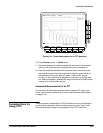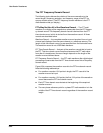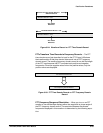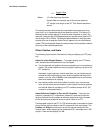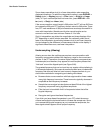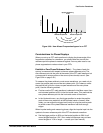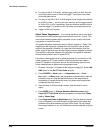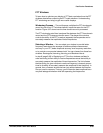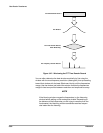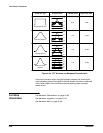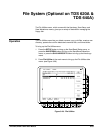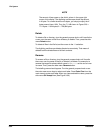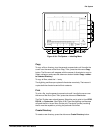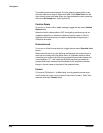
Fast Fourier Transforms
TDS 620A, 640A & 644A User Manual
3Ć49
FFT Windows
To learn how to optimize your display of FFT data, read about how the FFT
windows data before computing the FFT math waveform. Understanding
FFT windowing can help you get more useful displays.
Windowing Process Ċ The oscilloscope multiplies the FFT time domain
record by one of four FFT windows before it inputs the record to the FFT
function. Figure 3Ć27 shows how the time domain record is processed.
The FFT windowing acts like a bandpass filter between the FFT time domain
record and the FFT frequency domain record. The shape of the window
controls the ability of the FFT to resolve (separate) the frequencies and to
accurately measure the amplitude of those frequencies.
Selecting a Window Ċ You can select your window to provide better
frequency resolution at the expense of better amplitude measurement
accuracy in your FFT, better amplitude accuracy over frequency resolution,
or to provide a compromise between both. You can choose from these four
windows: Rectangular, Hamming, Hanning, and BlackmanĆHarris.
In step 8 (page 3Ć38) in Displaying an FFT, the four windows are listed in
order according to their ability to resolve frequencies versus their ability to
accurately measure the amplitude of those frequencies. The list indicates
that the ability of a given window to resolve a frequency is inversely proporĆ
tional to its ability to accurately measure the amplitude of that frequency. In
general, then, choose a window that can just resolve between the frequenĆ
cies you want to measure. That way, you will have the best amplitude accuĆ
racy and leakage elimination while still separating the frequencies.



